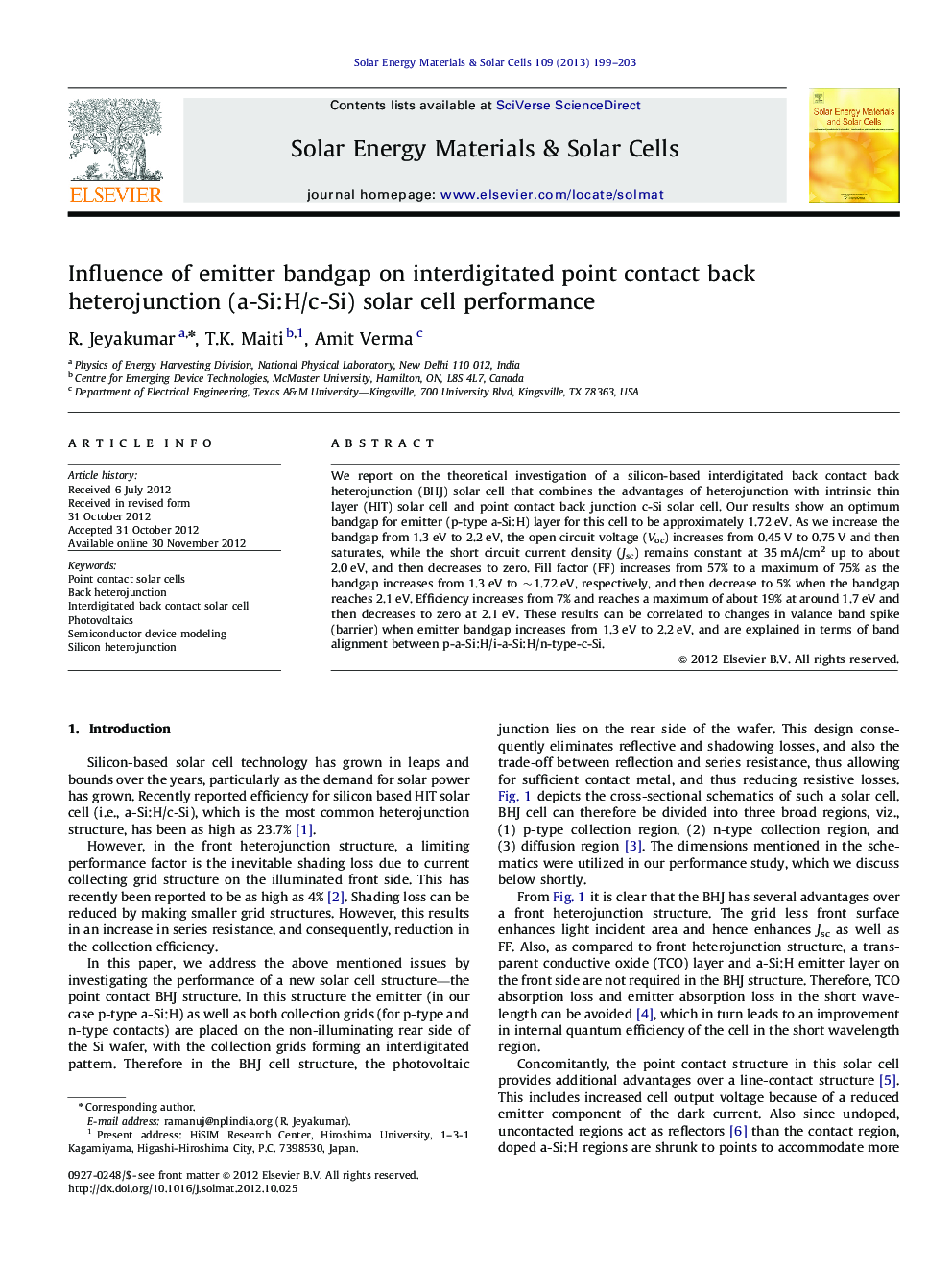| Article ID | Journal | Published Year | Pages | File Type |
|---|---|---|---|---|
| 78433 | Solar Energy Materials and Solar Cells | 2013 | 5 Pages |
We report on the theoretical investigation of a silicon-based interdigitated back contact back heterojunction (BHJ) solar cell that combines the advantages of heterojunction with intrinsic thin layer (HIT) solar cell and point contact back junction c-Si solar cell. Our results show an optimum bandgap for emitter (p-type a-Si:H) layer for this cell to be approximately 1.72 eV. As we increase the bandgap from 1.3 eV to 2.2 eV, the open circuit voltage (Voc) increases from 0.45 V to 0.75 V and then saturates, while the short circuit current density (Jsc) remains constant at 35 mA/cm2 up to about 2.0 eV, and then decreases to zero. Fill factor (FF) increases from 57% to a maximum of 75% as the bandgap increases from 1.3 eV to ∼1.72 eV, respectively, and then decrease to 5% when the bandgap reaches 2.1 eV. Efficiency increases from 7% and reaches a maximum of about 19% at around 1.7 eV and then decreases to zero at 2.1 eV. These results can be correlated to changes in valance band spike (barrier) when emitter bandgap increases from 1.3 eV to 2.2 eV, and are explained in terms of band alignment between p-a-Si:H/i-a-Si:H/n-type-c-Si.
► In the point contact structure undoped region at the rear side acts as reflector. ► Doped regions are shrunk to points and provide more space for undoped region. ► Point contact structure enhances reflection from the rear side. ► In the literature, no reason has been reported for choosing emitter bandgap of about 1.7 eV. ► Improved band alignment enhances efficiency to a maximum when emitter band gap is around 1.7 eV.
